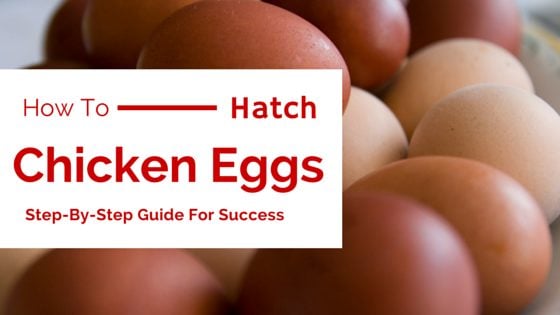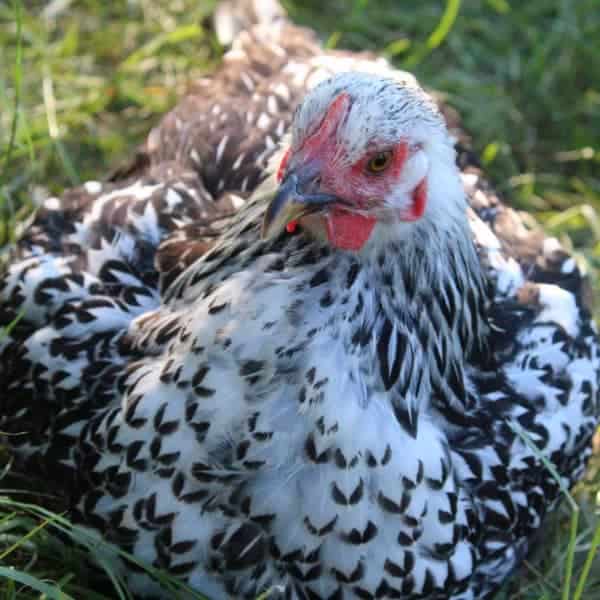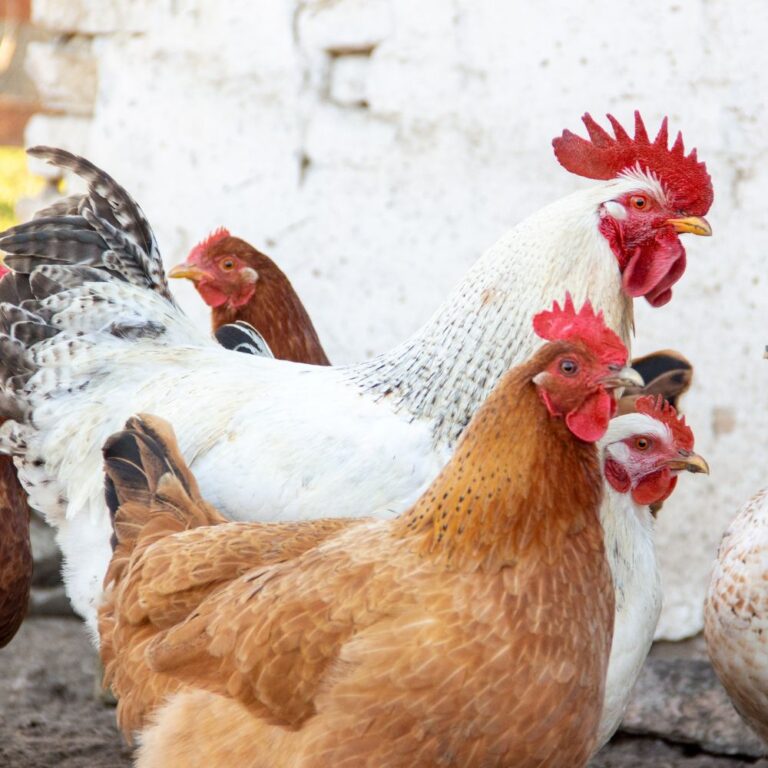This week’s podcast is about chicken facts that will amaze you.
I’ve searched for the most interesting chicken facts I could find that you might not know, and I came up with some really great information that I think you’ll love.
If you don’t want to listen to the podcast, you should read the transcript below, and be prepared to be blown away.
You’ll learn:
- Just how your backyard chicken was linked to dinosaurs
- What tidbitting is (and why it matters)
- How chickens can count
- Why roosters are nice, but not necessary to a flock
- Why you hear chickens don’t have teeth, but that’s wrong
Links we discuss:
Where to grab a free coupon book ($32 value) for Manna Pro Poultry feed
How the backyard chicken was linked to T. Rex
LIKE THIS PODCAST? HERE’S MORE!
Transcript:
Hi there, and welcome to session 27 of What the Cluck?!, a podcast devoted to keeping chickens for fun and self-sufficiency. I’m Maat from FrugalChicken, and in this episode we are going to talk about amazing chicken facts that you didn’t know.
This will be a fun episode, and at the end of it, you’ll be just that much more knowledgeable about chicken flocks. These are the kind of facts that will just leave you scratching your head in wonder.
Just as a reminder, you can get this episodes show notes at TheFrugalChicken.com/Podcast27, that’s podcast with the numbers 2 and 7.
So stay with me!
Your Chicken has taste buds
So, our first on our list of amazing chicken facts is that chickens have taste buds. Yep, this is true, and confirmed by the University Of Nebraska, Lincoln.
Now, that’s not to say your chicken has a sophisticated sense of taste, at least as far as human taste goes, since I’ve seen mine dig up a mouse that’s been dead a while and proceed to fight over it like it’s some wonderful treat.
But, still, a chicken can taste.
Now, a chickens only has a few taste buds, about 300 to 500 or so, while people have about 10,000. And in case you wondered, catfish have about 175,000 taste buds.
Chickens are the closest living relative to the famous dinosaur Tyrannosaurus Rex.
Next on our list of amazing chicken facts is that your backyard chicken is related to a T. Rex.
Now, this is true, and it’s one of many pretty well-known chicken facts, but here’s some of the background about how they know your chicken is related to dinosaurs and how to they figured it out.
In 2007, scientists were able to confirm using bits of protein obtained from collagen in a T. rex fossil from an adolescent female Tyrannosaurus rex that the dinosaur and you chicken is related.
So, they weren’t able to DNA link a chicken to dinosaurs, but they used the DNA codes for the proteins they studied in collagen from a T. rex fossil.
So, this collagen contained the oldest preserved proteins ever found at 68 million years old, and these researchers found that out of every other animal out there, the collagen most closely resembled the collagen of a backyard chicken.
Now, to put this into a bit of perspective, the next oldest bone containing protein tissue is a 100,000- to 300,000-year-old mammoth bone.
These chicken facts, which was published in the well-regarding magazine Science, didn’t really shock researchers, because they had already predicted it by looking at the skeletal anatomy of both animals.
The dinosaur protein was obtained a fossil found in 2003 by John “Jack” Horner of the Museum of the Rockies, and was found in a plot of land between Wyoming and Montana, and the collagen that was preserved in the T. rex bone, that they were able to compare to chicken collagen, was discovered in 2005.
Now, that being said…
There are chickens in existence that have teeth, and every chicken has the capacity to grow teeth.
One of these chicken facts you might not know is that there is a chicken with teeth.
Stay with me here. Your chicken doesn’t have teeth, she has a beak, these are established chicken facts, and they swallow their food whole, where it gets stored in the crop, passed to the stomach and ground down in the gizzard by stones it has swallowed.
But, as decedents of dinosaurs, every chicken possess the genes to grow teeth. Scientists at the University of Wisconsin in Madison, Wisconsin have figured out how to switch that gene on, and can actually produce a chicken with teeth.
So, while most don’t have teeth, there are chickens in existence with them, and I put a photo of these amazing chicken facts in the show notes.
Chicken flocks were domesticated around 7,000 to 10,000 years ago.
Next on our chicken facts list comes from the Smithsonian, and it is that chickens were first domesticated between 7-10,000 years ago probably in Southeast Asia.
The earliest fossil bones identified as possibly belonging to chickens appear in sites from northeastern China dating to around 5400 B.C., but the birds’ wild ancestors never lived in that area.
They likely were a product of trade, since they most likely came from Southeast Asia.
Some chicken facts that are well established is that the chicken’s wild progenitor the red junglefowl, scientific name Gallus gallus, originated in SE Asia. This is according to a theory proposed by Charles Darwin, and the theory was confirmed by DNA analysis.
Scientists have also identified three closely related species that might have bred with the red junglefowl to produce the modern-day chicken, but the bottom line is nobody really knows how your chicken, in your backyard, evolved.
According to Michael Zody, a computational biologist who studies genetics at the Broad Institute of Harvard and MIT, domesticated and wild birds will mate, mixing and matching, so its difficult to get the facts about how the modern chicken came to its current state.
However, in 2004, an international team of geneticists at the Uppsala University in Sweden, were able to complete a map of the chicken genome.
Now, to make these chicken facts more incredible, this made the backyard chicken the first domesticated animal, before dogs, cats, etc, and the first bird, as well as the first descendant of the dinosaurs, to have its genome mapped.
So, to map the chicken genome, researchers have been studying the differences between the red junglefowl and the common backyard chicken, particularly the differences between layers and broilers.
Chickens are predators
So, next on our list of little-known chicken facts is that chickens are actually predators.
You might know that the common backyard chicken is an ominvore, meaning they eat meat in addition to plants, grains, etc.
A lot of people are surprised to learn these facts, because most birds are prey animals themselves. But your chicken probably hunts everything from bugs and worms they dig up to frogs to mice even.
I’ve personally caught my hens fighting over a live frog as they decided who got to eat it.
If you offer your hens a large clump of dirt, chances are, they’ll start scratching through it to look for things like worms and grubs.
A large portion of a hen’s diet should be protein, and if you look at commercial feed, layers should eat, at a minimum, 16% protein in their diet.
But hens left to forage will pick up as much as 70% of their diet in protein, and they’ll also eat things like grass, berries, seeds, and whatever else looks tasty to them.
Given the option, a chicken will actually gladly go for meat scraps over something like bread as well. They’ll even eat their own eggs, given the opportunity.
So, if you want to indulge your chicken, you can get some live for freeze dried mealworms to give them a treat.
Now, speaking of mealworms, and amazing chicken facts, this podcast is sponsored by Manna Pro Poultry, which is the feed company I recommend for any chicken keeper out there, and I’m happy to partner with them to bring you this podcast because I love their feed.
They have a full array of organic, non-GMO feed for every stage of your chicken’s life, which is huge, and new this year is their Organic Grower Crumbles. This is a brand I trust, and that’s why I’m happy to tell you about them.
You might notice that in every episode I discuss how important diet is, and that’s because it dictates not just how healthy your hens are, but how healthy their eggs are for you.
Now, if you buy chicks at the feed store this spring, and you’re not sure which feed to buy for them, go with Manna Pro’s non-GMO, organic crumbles, and you can be sure you’re headed in the right direction to raising a happy, healthy flock.
Now, if you go to the Manna Pro Poultry page, and I’ll put a link to that page in the show notes, you can register to get a Chick Days Coupon Book, which they will send to you.
There’s $32 in coupons in the book, and you will also find coupons for their organic crumbles, as well as their other products, such as hen treats and their mealworms, which I especially love.
The mealworms are very reasonably priced for the amount that you get, and you can mix them with the organic crumbles for an additional protein boost, which is so important for your chickens.
You can visit Manna Pro to find out more about their line of organic, non-GMO feeds at MannaPro.com.
You don’t need a rooster to get eggs
Some chicken facts that not everyone knows are that you don’t need a rooster in order to get eggs, and hens will lay eggs naturally. Now, if you want fertilized eggs and to hatch chicks, you will need a rooster but as far as getting eggs to eat, you only need hens.
That being said, there are advantages to keeping roosters, if you’re allowed to have them in your area.
Some facts about roosters are that his job is to defend their girls from predators, although some have more of a protection instinct than others. Some of mine get quite unhappy when separated from their girls, while others I have don’t care either way.
A good rooster will help the hens look for food, digging up goodies and letting the hens eat them.
Now, having a rooster is definitely not for everyone, and if you only want hens for eggs, and don’t plan on hatching chicks, a rooster is definitely not necessary. A good chicken tractor or a solidly built run will do a good job of keeping your flock safe from predators.
Some other facts are that roosters can be noisy, and will crow early in the morning, long before most people want to get up, and if you have neighbors, they definitely will not appreciate it.
The dance a rooster does during mealtime is called tidbitting, and it has a specific function.
Next on our list of amazing chicken facts you might not know about is tidbitting.
So, if you’ve ever seen or heard a rooster cluck a lot during mealtime and move food around, this dance has a name, it’s called tidbitting, and it actually has a specific function.
Researchers at the Centre for the Integrative Study of Animal Behaviour at the Macquarie University, in Sydney, Australia, found that this dance serves as a way to usher hens to food as well as identifying themselves as potential mates.
Now, if you’re not sure what I’m talking about, let me explain. If you’ve ever watched a chicken hunt for food, and find something really juicy, and start clucking a lot, that’s tidbitting. The purpose is to get other hens to recognize a food source, and come join in.
A rooster in particular, will grab food, if possible from the source and move it around to grab the hens’ attention. He’ll make sure the ladies eat first, all the while clucking to them to grab their attention.
While tidbitting is something you’ll see with roosters, some other chicken facts are that hens will do it for other hens, and for their chickens.
You might also notice it being done by hens when they’ve found something good to eat.
You also might notice hens doing this with their chicks, and what they’re doing is showing their chicks what food they can eat as well as where to find it.
Now, with roosters, researchers have found that tidbitting is also part of a mating dance. Tidbitting allows the males to get closer to the females, fostering a social response that the rooster is a quality potential mate.
Now, that being said, the common backyard chicken actually has a language they use to communicate to each other, and the noises made during tidbitting are part of that language. There’s also sounds for laying eggs, enforcing the pecking order, for pain, etc.
Hens and roosters are sacred in some cultures
Now, next on our list of incredible chicken facts is that in some cultures, the common chicken was, and still is, a sacred animal, with hens being a symbol of nurturing and fertility, and roosters being a symbol of virility.
In ancient Egypt, eggs were hung in temples to ensure the Nile would make its annual flood, thus ensuring a bountiful harvest.
The chicken most likely arrived in Egypt between the 5th to 4th century BCE, and the Egyptians were also the first human culture to master artificial incubation, which was a benefit because the hens could then make more eggs for people to eat.
In ancient Persia, roosters symbolized a benign spirit that crowed at dawn as a way to mark the turning point in the struggle between darkness and light.
The rooster was one of the most sacred beings in ancient Iran as early as 1000 BCE, and was said to help dogs with guarding and protecting, as well as fighting off evil spirits that came to harm newborn babies with their crowing.
During the Roman Empire, hens and roosters accompanied armies marching to battle, and their behavior was seen as a portend for how successful the campaign would be.
According to the Smithsonian, a chicken was watched before battle, and if it ate well, then a victory was likely, and the writings of Cicero tell a tale that when a chicken refused to eat before a sea war in 249 B.C., army authorities threw the birds overboard, and the army was defeated in battle.
Your Chicken Can See Color Better Than You
So, more chicken facts you might not know are that chickens can see color better than people.
Researchers at the Washington University School of Medicine in St. Louis, Mo mapped five types of light receptors in the eyes of chickens, discovering that these receptors were laid out in interwoven mosaics, and allow chickens to see many more colors than people.
According to researchers, there are far more color receptors in a chicken than in most mammalian retinas, including humans. This is an evolution thing. So, apparently when mammals were evolving, we went through a period where we were nocturnal, during the age of the dinosaurs.
But birds didn’t, and owe their exceptional color vision to not going through a period where they were nocturnal. Now, for some basic biology, according to researchers, for good night-vision, you need light-sensitive photoreceptors in the retina, and these photoreceptors are called rods.
Daytime vision, on the other hand, requires photoreceptors called cones. So, because birds did not go through this nocturnal phase of evolution, they have more types of cones than mammals, allowing them to see many more colors than we do.
So, while people are sensitive to red, blue and green wavelengths,” birds can detect violet wavelengths, including some ultraviolet. They also have a specialized receptor called a double cone that helps them detect motion. This is why roosters crow so early in the morning – they see light on a different wavelength than people.
The extra ability to sense color might help chickens find mates or to find food. A chicken’s ability to see color might also contribute to helping people, and research is being done to use stem cells to treat genetic disorders that cause different sorts of blindness.
Your chicken can count
According to researchers in Italy, the common backyard chicken knows how to count. Researchers were able to show a chick’s ability to add and subtract objects as they were moved behind two screens.
They were able to test chicks counting skills by raising them with small plastic balls, and since they were imprinted on the balls, they tended to follow them around, similar to staying close to a hen.
They suspended these balls, then made them disappear by putting them behind screens on at a time so the chicks couldn’t see them.
So, a chick would watch from a clear box while a researcher moved each ball behind a screen, first putting 3 balls behind a screen then two behind the other. The chick was then released, and it could walk around then pick a screen to look behind.
The chicks had to rely on memory to know which screen had the larger amount of balls, but each time, the chicks chose the screen that had more balls behind it. So, to test it further, the researchers transferred the balls from one screen to another.
The chicks were still able to figure out which screen had the larger amount of balls, adding up the numbers based on different groups of objects that they couldn’t see at that moment.
So, that’s this week’s podcast.
Now, if you’re interested in learning how to raise baby chicks and want some extra help, I actually have a book available on Amazon which can help you get started.
The book is called Chickens: Naturally Raising A Sustainable Flock, and if you’re interested in raising chickens naturally, then this book is for you.
It’s a 50 page ebook all about how to naturally raise a sustainable flock of chickens. You can check it out at TheFrugalChicken.com/chickenbook.
Thanks for listening to this episode of What The Cluck?! about how to raise baby chicks, and I’ll see you next time!
Maat van Uitert is a backyard chicken and sustainable living expert. She is also the author of Chickens: Naturally Raising A Sustainable Flock, which was a best seller in it’s Amazon category. Maat has been featured on NBC, CBS, AOL Finance, Community Chickens, the Huffington Post, Chickens magazine, Backyard Poultry, and Countryside Magazine. She lives on her farm in Southeast Missouri with her husband, two children, and about a million chickens and ducks. You can follow Maat on Facebook here and Instagram here.




![Rooster Rockstars: What Makes A Good Rooster Anyway? [Podcast]](https://thefrugalchicken.com/wp-content/uploads/2016/05/roosters-feature-min.jpg)


![Broody Chickens, Hens In Winter, & Covered Runs (Your Questions Answered!) [Podcast]](https://thefrugalchicken.com/wp-content/uploads/2016/02/broody-chickens-feature-min.jpg)